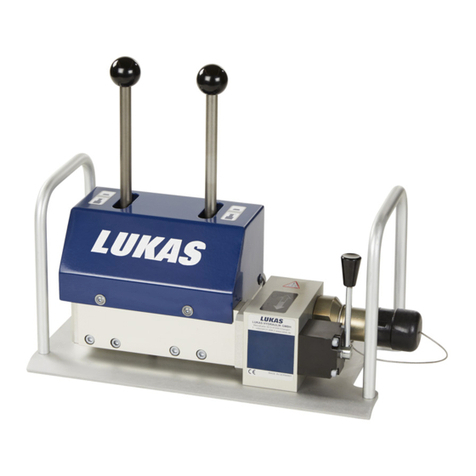
6
Immediately report any
changes that occur (including
changes in operating
behaviour) to the appropriate
persons/departments! If
necessary, the equipment is to
be shut down immediately and
secured!
All bolted connections must
be checked for leaks and
externally visible damage,
which must be repaired
immediately! Escaping
hydraulic fluid can cause
injuries and fires.
In the event of malfunctions,
immediately deactivate the
equipment and secure it.
Repair the fault immediately.
Do not carry out any changes
(additions or conversions)
to the equipment without
obtaining the approval of
LUKAS beforehand.
Observe all safety and danger
information on the device and
in the operating instructions.
All safety and danger
information on the device must
always be complete and in a
legible condition.
Any mode of operation which
compromises the safety and/
or stability of the device is
forbidden!
Repairs to the equipment may
only be carried out by a trained
service technician with specific
knowledge of the device.
Safety devices must never be
disabled!
Only genuine LUKAS
accessories and spare parts
are to be used for repairs.
Make sure before switching
on/starting up the device and
during its operation that this
will put no one in danger.
Observe all intervals for
recurring tests and/or
inspections that are prescribed
or stated in the operating
instructions.
When working close to live
components and cables,
suitable measures must be
taken to avoid current transfers
or high-voltage transfers to the
equipment.
Please note that materials can
fall off during lifting or lowering
or be slung away if a load is
suddenly released. Also take
suitable precautions of your
own.
Please ensure that you do not
become entangled in cables
and trip when working with or
transporting the device.
Please ensure that dust
protection caps are provided
for the couplings.




























